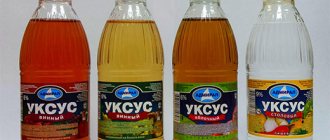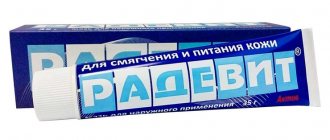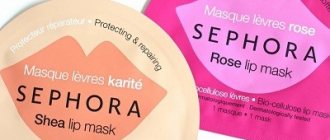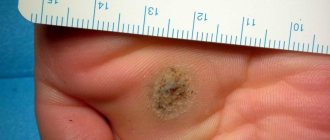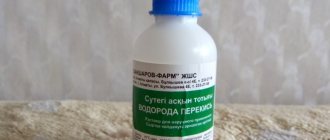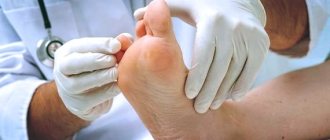Warts are benign neoplasms in the form of round, protruding growths that appear on the skin. They are viral in nature. They form regardless of a person’s age and can be located on any part of the body, affecting the mucous membranes of the bladder, oral and nasal cavities.
Removing papillomas is an urgent problem. Despite the fact that small warts do not cause significant discomfort, they can grow, spread throughout the body, forming entire colonies, and cause pain when damaged. In rare cases, they become malignant.
In the article you will get the answer to the question of whether warts need to be removed and how to do it correctly, you will learn about folk remedies for treating warts, in particular, how to get rid of warts using potatoes.
What is a wart
Papilloma (more popularly known as a wart) is a small nodular formation protruding above the skin , covered with keratinized epithelial cells. In most cases, it has a benign course, but can acquire the properties of a malignant tumor.
Warts are among the most common skin diseases; they occur in 60% of children and 43% of adults.
Formations appear on the skin due to exposure to human papillomavirus infection . The fact is that the human papillomavirus (HPV) is present in the body of almost every person. Against the background of decreased immunity, the virus begins to multiply intensively, and warts form on the skin.
They can occur on any part of the body, mucous membranes, but are more often observed on the back of the hand, fingers, and less often on the face. Papillomas have an uneven, rough surface, sizes vary from 0.5 to 1.5 cm, color - from flesh-colored to grayish, and can be flat or hanging.
Infection is possible through contact with an infected person or animal, through household means, through things or toys. HPV can also enter the body through microtraumas on the skin associated with the habit of biting fingers and nails, shaving, peeling and other cosmetic procedures that violate the integrity of the skin.
Take note:
Effective recipes for potato eye masks
Dill is an effective beauty product
Simple and effective watermelon masks for face and hair
Classification of warts
The following types of warts are distinguished:
- Flat (youthful). The risk group includes people aged 10 to 25 years. Usually affects the skin of the face, the back of the hands, the mucous membranes of the rectum, cervix, and glans penis. They have an irregular rounded shape of flat nodules, protruding above the skin by 1-2 mm.
- Ordinary (vulgar). They are represented by dense, dry, keratinized elevations with an uneven villous surface with a diameter of 1 to 10 mm. The color of the adjacent skin does not change, but yellow and pink shades may be present. Most often observed on the hands, palms, and fingers. They can merge into colonies, where usually one wart is the largest; it is called the mother wart. After its removal, other small growths disappear spontaneously, without outside intervention.
- Plantar (palm-plantar). Their name determines the place of localization - on the pads of the fingers and feet, heels. This location of the wart leads to its constant injury and the appearance of pain while walking. The causes are dryness or excessive sweating of the foot, wearing uncomfortable tight shoes, deformation of the foot, damage to the skin on it. Externally, they are similar to ordinary warts - dense formations with a thickened layer of skin. They have a deep root, and if it is not completely removed, new growth of papilloma is possible. Common among young and older people.
- Periunguals . A type of common wart, it is most often found in children who bite their nails and the skin around them. They are located on the periungual ridges of the fingers and toes, have a rounded shape, pinkish-flesh color with keratinization. May cause discomfort and pain. After removal there is a high probability of recurrence.
- Pointed (condylomas). They have a lobed structure and a dough-like consistency, which is why they look like cauliflower or a rooster's comb. Located on a narrow stalk, prone to fusion. In a calm state, the color of warts is flesh-colored or closer to pink; when rubbed or injured, they become purple and may bleed. The predominant affected areas are the genitals and the perineal area; in children, the nasolabial fold.
- Filiform (acrochord). They are represented by elongated formations of elastic consistency ranging from 5 to 7 mm. They form in the armpits, under the mammary glands, on the skin of the face and neck, but can spread to neighboring areas of the body. More often found in older people. In most cases, their occurrence is accompanied by hormonal changes: menopause, pregnancy, diabetes, obesity.
Papillomavirus
Papillomaviruses are divided into 27 species in 5 genera . Over 600 types (strains) of the virus have been detected in humans. More than 40 varieties cause damage to the genitals and the area around the anus in the form of pointed papillomas. Some strains of the virus cause cancer, but most are harmless.
The causes of warts on the body are associated with 60 types of papillomavirus. A person can become infected with several types of HPV at the same time.
Human papillomavirus infection is characterized by a latent course , and only under the influence of certain factors does the virus become activated and the disease progresses to the stage of clinical manifestations. After entering the body, the incubation period can last up to 6 months, but against the background of decreased immunity, the virus multiplies more actively.
How are parasitic skin infections transmitted?
Parasitic dermatoses with which a child will not be allowed into a preschool include lice and scabies.
Pediculosis
Pediculosis or lice is a parasitic disease caused by lice, which is transmitted by contact from person to person. Lice lay eggs on the hair, at a distance of 2-3 cm from the skin, where they stick. Lice feed on blood and can live no more than two days without a host.
⠀
Symptoms of pediculosis:
- severe itching in the scalp (if pediculosis is caused by head lice), pubis (pediculosis is caused by pubic lice) and throughout the body (pediculosis is caused by body lice);
- small red dots on the skin (lice bites);
- white dots on the hair that look like dandruff are nits, lice eggs;
- poor sleep, constant anxiety and irritation caused by itching;
- the formation of wounds and crusts when combing.
Treatment of lice is based on the use of specialized external agents and combing out nits. It is necessary to treat not only the “sick” person’s head, but also clothes, bedding, and furniture.
It is important to know that in children under 3 years of age, local remedies for the treatment of head lice are prohibited; at this age, parasites can only be combed out. If lice is detected in one of the family members, everyone is treated, even those who have not become infected. The use of folk remedies such as kerosene, vinegar, etc. is unsafe and ineffective.
Scabies
Scabies is a highly contagious disease caused by the scabies mite sarcoptes scabie. Infection with scabies mites occurs through close contact with a sick person, as well as through the use of contaminated household items (washcloths, towels, etc.), and the incubation period is 7–14 days, that is, the first symptoms of infection do not appear immediately after contact.
Clinical manifestations of scabies:
- intense itching in the evening and at night (since the scabies mite gnaws through the passages at night);
- sometimes with scabies, scabies are visualized - they look like thin flesh-colored stripes on the surface of the skin;
- in areas with thin skin, slightly red papules and vesicles are visible.
If the patient does not consult a doctor in a timely manner, the rash may spread to the entire surface of the torso and limbs, and a secondary bacterial infection may also occur.
In an adult, the scabies mite does not affect the head and neck area, but in a child, on the contrary, the main sites of infection are the head, neck, palms and soles.
There are several forms of scabies:
- Typical - classic clinical picture with itching, vesicles and characteristic localizations.
- Low-symptomatic scabies is observed in people who wash frequently, because... they wash away a large number of mites.
- Scabies without passages, if the initial infection occurred with a mite larva.
- Norwegian scabies is a rare disease and occurs in immunocompromised people.
⠀
Diagnosis of scabies is based on a competent history taking, examination of the entire skin, and dermatoscopy (using a dermatoscope to search for scabies tracts). Laboratory tests and microscopy are used to check for the presence of scabies mites.
When treating scabies, therapeutic regimens should be aimed not only at treating the patient, but also at preventing infection of family members.
In this case, it is necessary to completely boil clothes, linen and treat the room where the patient with scabies was. The tick can live at room temperature without a host for up to 4 days. Boiling at 100 degrees kills the tick, and at a temperature of 60 degrees the tick dies only after an hour.
Treatment consists of using local specialized products according to a specific scheme. Recommended use of Benzyl benzoate, 20% emulsion for application to adults and 10% to children.
The effectiveness of using potatoes in the fight against papillomas
Warts are prone to rapid growth, proliferation, recurrence, can bleed, become painful , and, if self-medicated inadequately, cause the appearance of scars and malignant degeneration. Therefore, it is important to respond promptly to the appearance of papilloma and take appropriate measures. Traditional medicine offers effective and safe treatment of warts with potatoes.
Important! If you decide to get rid of skin lesions using alternative medicine, be sure to visit a specialist so that the doctor can conduct an examination and order the necessary tests to confirm that it is a wart and not a malignant tumor.
Potatoes have long been a well-known remedy for papillomas in folk medicine . It contains substances that are effective for skin diseases. Some of them are even used in oncology.
Compared to chemical agents, potatoes for warts have a number of undeniable advantages :
- Potatoes allow you to painlessly remove skin growths on the body and do not cause burning or pain, as happens when using medications.
- Treatment of papillomas with potatoes is a free method of therapy. The average price for 1 kg of potatoes is 15-35 rubles. depending on the season.
- Potatoes for the treatment of warts are a natural medicine, have virtually no contraindications for use, and rarely provoke unwanted reactions, which is confirmed by rave reviews from those who have tried the remedy on themselves.
However, potatoes against warts also have some disadvantages :
- It will take a lot of time to achieve the desired result, since the effect is cumulative.
- When using potatoes, some people may experience an allergic reaction in the form of peeling, itching, redness of the skin, and rashes.
- For potatoes to work, you need to choose the right fruits and not use old or rotten tubers.
Before removing warts using potatoes, it is necessary to conduct a sensitivity test . To do this, rub the crook of your elbow with a cut potato and observe the reaction. If rash, itching and burning do not appear, you can use potatoes for warts.
Potato varieties resistant to scab
Zhukovsky early is an early ripening drought-resistant variety. Pink tubers with excellent taste.
Spring White is an early ripening variety with white tubers. These potatoes keep well.
Lugovskoy - in addition to disease resistance, the variety has many advantages: it ripens early, is unpretentious in care, produces consistently high yields, and is stored for a long time.
Elizaveta is an old high-yielding variety with tasty white tubers. Suitable for cultivation in the Middle Zone, North-West, North Caucasus and Far East.
Temp is a high-yielding, late-ripening variety. Tubers with creamy pulp for universal use. Potatoes keep well.
Find out more about other popular varieties in the article “The Best Potato Varieties.”
Spells and rituals for potatoes against warts
Spells for potatoes and rituals using them will only help if you know how to use them and believe in their power . Each word has its own energy and purpose, in our case it is to remove growths on the skin. The effectiveness of conspiracies is questionable and is in no way confirmed by science, but the manipulations are absolutely safe and do not threaten health.
On the waning or waxing moon
For the ritual , the phase of the moon during which the ritual is performed and the day of the week are important. Spells against diseases can be cast on both the waning and waxing moon. Women are allowed to perform the ritual on Wednesday, Friday, Saturday, men - on Monday, Tuesday, Thursday.
The first plot is read in the evening on the waning moon . To do this, cut the potatoes in half. Throw one half back over your head, rub the second half on the growth, saying out loud: “I take and take a potato, I pull out the wart so that it goes into the damp ground forever. Forever and ever, Amen." Then bury the vegetable in dry soil so that it dries there and does not germinate.
Important! After you have buried the potatoes, when going home, you cannot turn around and talk to anyone. Otherwise, you will be forced to carry out the plot again.
Another conspiracy designed to remove a wart with potatoes, only this time during the waxing moon phase. To do this you will need a red woolen thread and one potato tuber. When the moon begins to grow, you need to apply the yarn to the growth and say out loud: “The growing moon, calling with you, take all my warts to you for good.” After this, bury the thread. As the thread rots, the wart will dry out, and once the thread rots completely, it will fall off. If there are many papillomas on the skin, you need to tie knots on a thread according to their number.
Causes
The disease actively develops in the dry, hot season. The infection most often spreads through the soil. It has been noticed that in slightly acidic soil, potatoes rarely get sick, but when grown in sandy alkaline soil, the tubers are more affected. Therefore, the outbreak of the disease is facilitated by excessive application of ash and unrotted manure to the soil.
Scab is transmitted through infected planting material and plant debris left on the site, in which the fungus persists.
Another reason for the spread of the disease is improper storage conditions: high humidity and air temperature in the basement, accumulation of a large volume of tubers in one place with poor ventilation.
Traditional recipes with potatoes for warts
There are several ways to remove warts with potatoes . For this purpose, a tincture, a compress, and celandine are used. The easiest way to get rid of papilloma using potatoes is to wipe the growth with a cut of fresh potato 3-4 times a day.
Potatoes with celandine
Celandine has long been used to treat skin lesions .
It contains more than 20 types of alkaloids. These are toxic substances that provide a bactericidal and bacteriostatic effect on HPV strains and inhibit the synthesis of microbial cell walls. Celandine extract in combination with potatoes helps get rid of vulgar and flat warts. To begin with, prepare a celandine extract , which contains vodka or alcohol along with the juice of the plant. This increases the shelf life of the medicine. It is necessary to add alcohol at the rate of 50 ml per 100 ml of juice. Immediately before use, grate the raw potatoes along with the peel, mix with celandine extract in equal proportions. Wipe the formations on the body with the mixture 2-3 times a day until complete recovery.
Raw potato compress
To prepare the compress you will need one medium-sized potato . Use a grater to grate the potato skin and some of the pulp underneath. The paste is applied to the papilloma, covered with polyethylene on top and secured to the body with several turns of a bandage.
The procedure is done at night before going to bed , in the morning the compress is removed, and the skin is rinsed with water. If desired, you can apply a cosmetic against warts, for example, celandine ointment. If the papilloma turns black, it means the treatment is working. As a rule, the wart disappears within 3-4 weeks.
Advice. To enhance the effect, it is recommended to add a clove of chopped garlic to the grated potatoes.
Alcohol tincture
Mix 2 tbsp. l. green potato sprouts, chopped celandine herb and thuja twigs, pour everything with 250 ml of vodka. Leave covered for 24 hours. Wipe the warts with the tincture several times a day . The course of treatment is 3-4 weeks. Store the medicine in the refrigerator in an airtight container.
Possible harm and contraindications
Treatment of warts with potatoes has virtually no contraindications, except for an allergy to the product.
Do not use a tincture or compress of potatoes if the integrity of the skin at the intended site of application is damaged. If you follow the recommendations, the risk of side effects is minimal . An important condition for a favorable outcome of the disease is consultation with a dermatologist and adequate treatment of papillomas.
It is recommended to coordinate all actions with a specialist. He must monitor the dynamics of the disease process. If side effects occur in the form of itching, burning, peeling or rashes on the skin, you must stop the procedure and seek medical help.
Reviews from doctors
Reviews from experts about the effectiveness of potatoes against papillomas are mostly positive or neutral, provided that all actions are previously agreed upon with medical professionals. In general, we can conclude that potatoes really cleanse the skin of formations, without causing significant side effects. But for this, treatment of warts with potatoes must be regular and long-term.
Negative statements are due to the fact that papillomas are a disease of an infectious nature , and the main method of treatment is not only to remove or destroy formations on the skin with medications or mechanical methods, but also to treat the underlying disease that led to the appearance of growths on the body.
When should you not touch warts?
Any skin formation on the body should not be touched or treated independently before an accurate diagnosis has been established. Papillomas have clinical similarities with nevi, cancerous tumors, calluses, so inadequate therapy can only aggravate the course of the disease, provoke undesirable consequences and serious complications.

